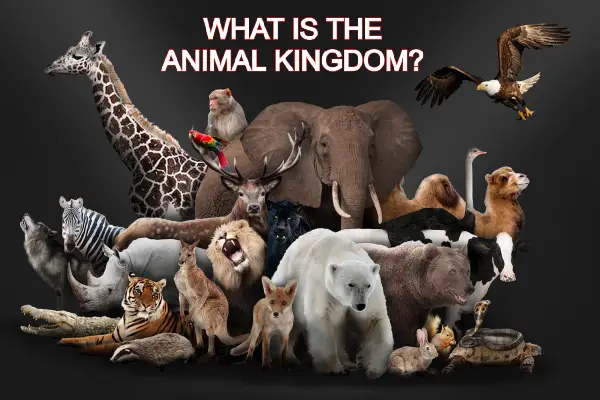Hello friends, do you want to know all about the animal kingdom, if yes, this article is for you. In this article, you have been given full information about step by step about the animal kingdom, so let’s start reading without wasting time.
What is Animal Kingdom?
More than 10–12 lac types of animals are being found on our earth, and the animal kingdom was first established by Carolus Linnaeus in the two-kingdom system. They divided the organism into two-kingdom. Kingdom Plantae and Kingdom Animalia.
Classification of Animal Kingdom –
The animal kingdom was classified by scientist George Quavier.
He divided the animal kingdom into 31 phyla, out of which 10 are big phylum called Major Phylum, and 21 are small phylum called Miner Phylum. Out of these, we will read 11 phyla, which will have 10 major phyla and 1 miner phylum.
Name of 11 Animal Phyla –
Friends, you have to remember these 11 phyla serial-wise, only then you will be easy to read and understand.
| Sr. No. | Phylum | Example |
| 1 | Porifera | Sycon |
| 2 | Coelenterata | Obelia |
| 3 | Ctenophora | Tinoplana |
| 4 | Platyhelminthes | Taenia (Tapeworm) |
| 5 | Aschelminthes/Nematoda | Ancylostoma |
| 6 | Annelida | Nerels |
| 7 | Arthropoda | Palaemon (Prawn) |
| 8 | Mollusca | Pila (apple snail) |
| 9 | Echinodermata | Starfish |
| 10 | Hemichordata | Balanoglossus |
| 11 | Chordata | Fish, Bird, humans, etc |
Of these, Ctenophora is a miner phylum.
The basis of classification of the animal kingdom –
The animal kingdom is classified on 6 bases.
- Body organization
- Symmetry
- Germ Layer
- Coelom
- Segmentation
- Notochord
Levels of Body organization –
The body organization means how the body of the animals is made. like our body is made of cells and the cells are making tissue together and the tissue is forming the organ and the organ is making organ system. That is, how is the organization of our body, organ system level organization because our body is getting organ system.
But there will be some animals in which the organisms will not be found, then only if the organs are found, then the organization of their body will be organ-level organization. There will be some animals in which the organ will not get the tissue, then their body will have tissue level organization and some will not get a tissue, only if there are cells, then their body will have cell level organization.
There are two types of organ system-level organization. Digestive system and circulation system.
Digestive system – This is of two types full digestive system and incomplete digestive system. The full digestive system is found in the 5th-11th phylum and the incomplete digestive system is in 2, 3, and 4th phylum.
Circulatory system – This is also of two types. Open circulation system and closed circulation system. The open circulatory system is found in the 7th-8th phylum and the closed circulation system is found in the 11th phylum.
Symmetry –
This means that if a body is cut from an axis that goes from the center of the body, whether it is attractive or transverse or how two equal parts are found, then such symmetry is called Radial Symmetry. This symmetry is found in the 2, 3, and 9th phylum but in the 9th phylum, this symmetry is found in the larva state.
And if the second body cuts two equal parts, then such symmetry is called asymmetry. This symmetry is first found in the union.
Such a creature whose body is found in two equal parts only after cutting from one axis, then such symmetry is called bilateral symmetry. This symmetry is found in the phylum from 4 to the 11th. The 9 is found in the larva state of the phylum.
Germ Layer –
These levels are in the embryonic state; this level is differentiated and makes the entire body. There are three types of levels.
- Ectoderm
- Mesoderm
- Endoderm
The exterior level is called ectoderm, the middle level is called Mesoderm and the internal level is Endoderm.
The animals in which these three levels are found are called Triploblastic.
Examples – From Platyhelminthes to Chordata phylum are triploblastic animals.
The animals in which Ectoderm and Endoderm are found at only two levels are called Diploblastic. In the middle of these levels, Jelly like is a substance called mesoglea.
Example – Porifera, Coeleteenrata, and Ctenophora are Diploblastic animals.
Coelom –
The empty space between the body wall and the gut wall is called Coelom. In these empty spaces, a hollow organ is found. Such organs that are hollow from the inside are called visceral organs.
Such as our heart, lung, liver, brain, etc.
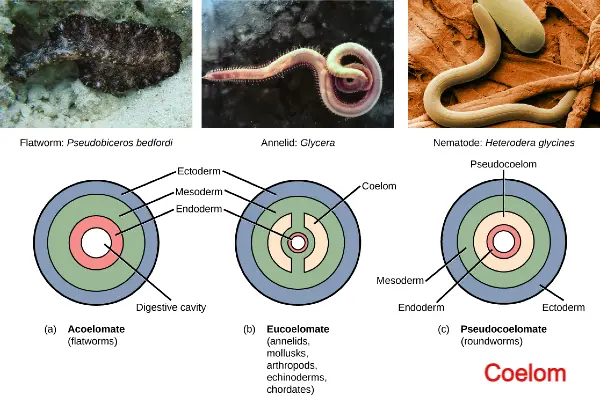
This coelom is made up of the breakdown of Mesoderm.
There are three types of animals based on coelom.
Acoelomate –
Such animals that do not contain coelom are called Acoelomate. Such as – 1, 2, 3, and 4 which are the phylum beings. 1, 2, 3, these are diploblastic, if they do not contain the mesoderm, then the coelom will be made from where, but the fourth phylum is triploblastic and it contains the mesoderm but where does it break the mesoderm, then where will the coelom be made, that is, it does not make the coelom. so That is, these four phyla are called acoelomate.
Coelomate –
In such animals in which the breakdown of mesoderm is made of Coelomate. They are also called true coelomates. It is leveled by the level of the coelom mesoderm. Examples – 6th-11th are called coelomates.
Pseudocoelomate –
Coelom is made from the sliding of the mesoderm towards the ectoderm. Example – The fifth is in the phylum beings.
Segmentation –
When the body is divided into sections, it is called Segmentation. It is of two types.
Surface segmentation – When the segmentation surface of the body is done only, its organs are not done, then such segmentation is called surface segmentation. Example – Coelenterata.
True segmentation – When the segmentation, the surface of the body as well as the limbs, is also done, it is called true segmentation. Examples – Annelida, Arthropoda, and Chordata.
Notochord –
On the back part, there is a hard, flexible, rod-like structure called a notochord. The animals in which this notochord is found are called chordates and in which it is not found, they are called Non-Chordates.
Animals from 1 to 10 phylum are Non-chordates. 11 phylum or the animals of the Chordata are chordates.
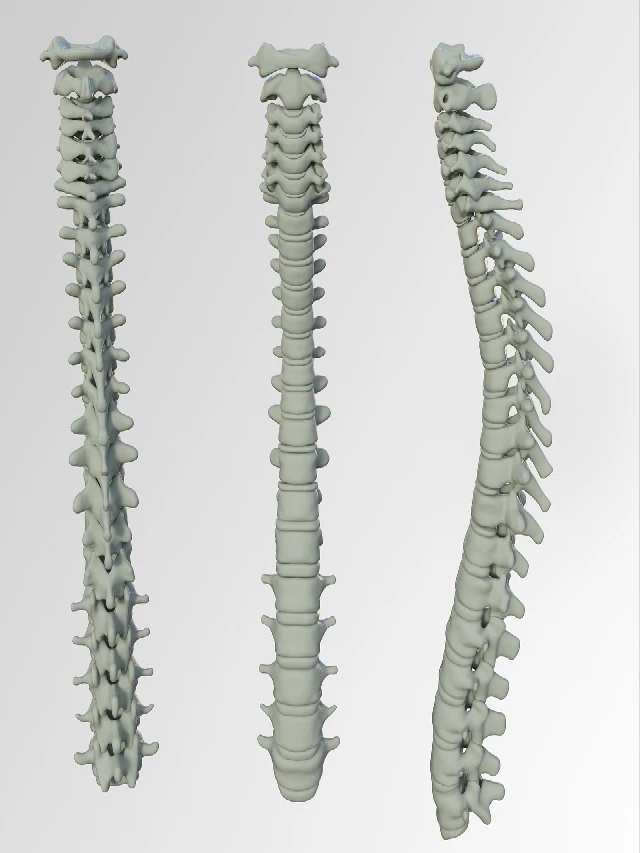
Friends, we have read about 6 bases, and now we will study the phylum.
Phylum Porifera
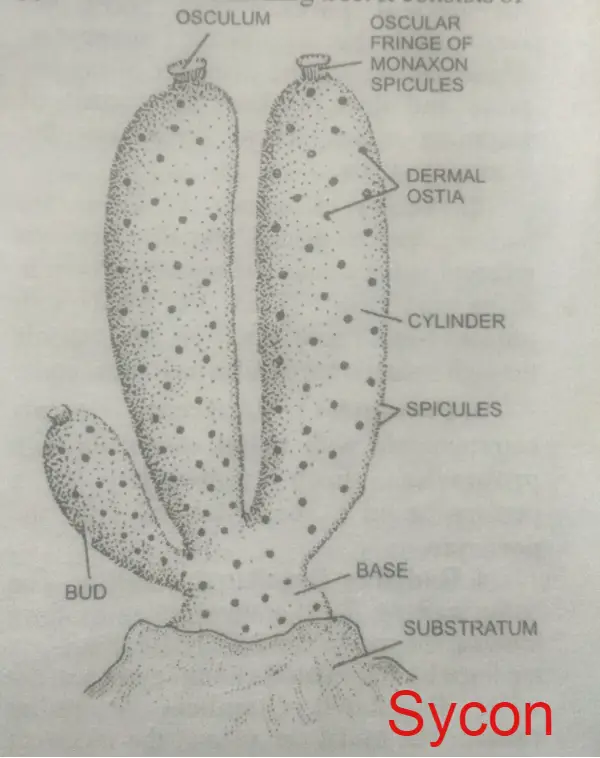
Characteristics of Phylum Porifera –
- They are aquatic. Most are found in saline water.
- These indicate asymmetry.
- Their physical organization is at the cellular level.
- They get water transport or a placenta system. Water transport means water inside these sponges which contain nutritional substances and gases that go in from small pores, out of which nutrients are taken into use and the waste material is removed from the large pore. Small pores are called ostia and large holes are called the osculum.
- These are diploblastic.
- The body of these sponges is made up of two levels, it is an external level called Pinacoderm. This level is produced by the ectoderm layer. Each cell of these pinacoderms is called Pinacocyte. And the inner level is called Choanoderm. Endoderm Layer builds it. Each cell of choanoderm is called Choanocyte. There are small pores between these two levels called ostia. Moreover, there is a mesoglea in the middle of these levels, in which thorny structures are found which are called spicules or spongin fibers. Therefore, different classes are classified on the basis of these spicules.
- They are classified on the basis of skeleton or spicules.
- They are bisexual.
- These include asexual reproduction by Budding, the fragmentation method.
- Their development is indirect.
- They have the ability to regenerate.
- Examples – Sycon, Spongila (freshwater), euspongia (Bathspang).
Phylum Coelentrata

Characteristics of Phylum Coelentrata –
- They get radial symmetry in them.
- They get the physical organization of the tissue level.
- They are found in seawater but Hydra is found in fresh-water.
- In which food is digested called coelenteron. This phylum is named coelentrata with the word coelenteron.
- They are found in bite cells on some parts of the body and on the tentacles which help in adhesive, self-defense, and hunting.
- These have a digestive inter-cellular type. That is, it occurs inside the cell.
- Their body indicates two types of structure, one is a polyp or cylindrical and the other is the size of a medusa or umbrella-shaped. But there is also a creature in this phylum in which both these types of structures are found named Obelia. When this animal generates asexual reproduction, the umbrella-shaped animal is formed and when this umbrella-shaped animal makes sexual reproduction, the animal of cylindrical is formed, that is, there is a generational alternation in this animal.
- Examples – Physelia, Hydra, Obelia, aurelia, etc.
Phylum Ctenophora
This is a small association.

The main characteristic of Phylum Ctenophora –
- They are also called comb Jelly or marine walnuts because 8 comb plates are found on their body surface, And their structure is like walnuts.
- They have radial symmetry.
- They are diploblastic.
- Their physical organization is at the tissue level.
- The member of this phylum is called a pelagic because they are found on the surface of the sea.
- There are two large tentacles found in them, on which a special type of cell is found which is called the Laso cell (colloblast) which helps in capturing prey.
- Digestives in these are both external and inter-cellular types.
- Bioluminescence is their main character. Bioluminescence means these organisms shine.
- They only get sexual reproduction and they are also bisexual. In these fertilization is external.
- Examples – Pleurobranchia, Tinoplana.
Phylum Platyhelminthes
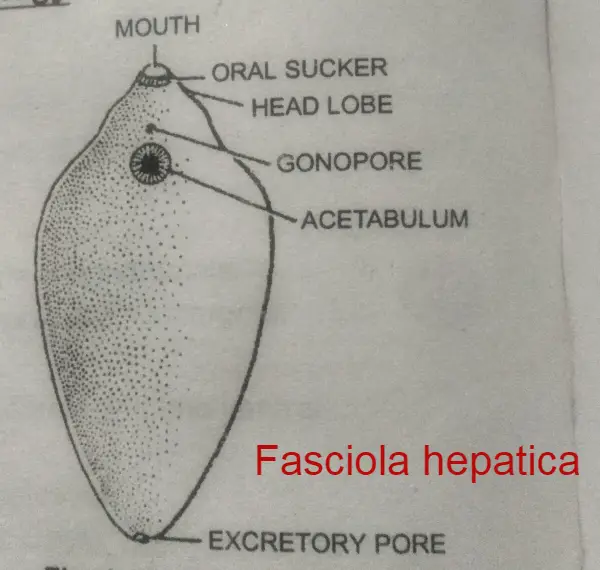
Characteristics of the phylum Platyhelminthes –
- Their back surface is flattened, so they are called flatworms.
- They contain bilateral symmetry, they are triploblastic and they do not get coelom.
- They have a physical organization at the organ level.
- Special types of cells are found in them called flame cells. Which helps in excretory. The name of the excretory organ is Protonephridia.
- Most of the animals of this phylum are internal parasites, which are found to be suckers.
- Most of the animals in it are bisexual and fertilization is internal.
- Planaria has an immense ability to regenerate. This means that if a small part of the planaria’s body is cut off, then the planaria will become again from that severed part.
- Examples – Taenia, Faciola, Planeria, etc.
Phylum Aschelmithies (round worm)
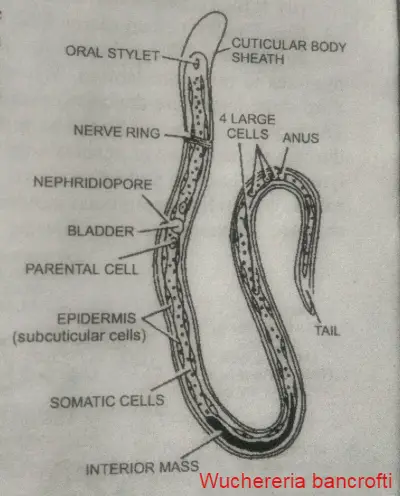
Characteristics of phylum aschelmithies –
- When the animals of this phylum are cut in transverse, they seem round, hence they are called roundworms.
- They are aquatic, terrestrial, free, or parasites in plants and animals.
- They get bilateral symmetry.
- They are triploblastic and they are found in pseudocoelom.
- In these, the first organ system level physical organization is found.
- The diet is complete in them.
- They have emission placenta/protonephridia and the cell that is inside it is called a rennet cell. Which removes waste materials from the body by the excretory holes.
- The animals of this phylum are unisexual and the female is larger than the male.
- The fertilization in them is internal.
- Examples – Ascaris, Wuchereria, Encyclostoma.
Phylum Annelida
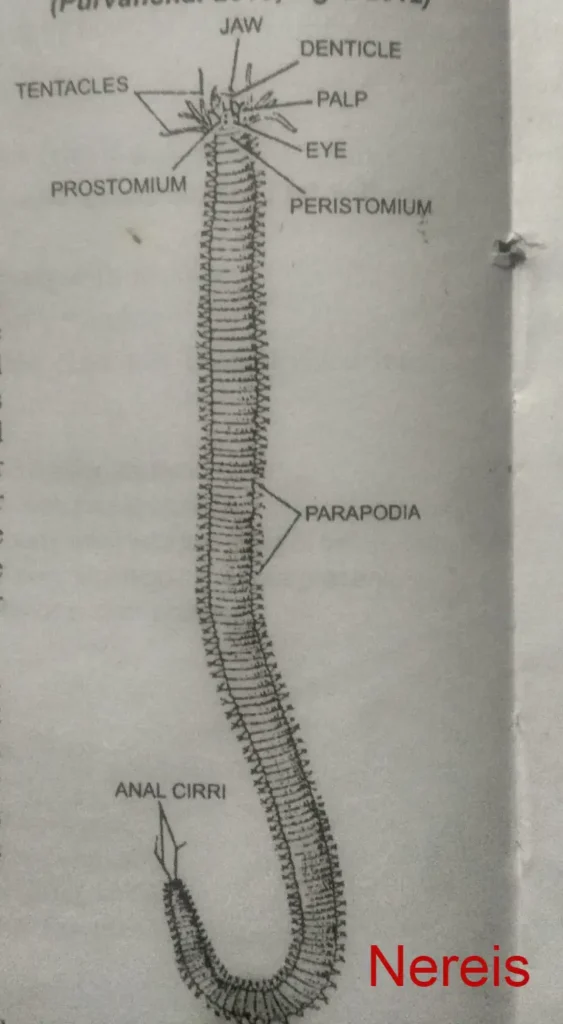
Main characteristics of Phylum Annelida –
- They are aquatic and are also terrestrial, free-living, or parasites in plants and animals.
- There is bilateral symmetry in them, these are triploblastic, and true coelom is found in them.
- They get the physical organization of the organ system, level.
- Their body is divided into sections.
- It contains vertical and circular types of muscles that help in movement.
- Parapodia are found in aquatic creatures Neries, which help in swimming.
- A closed circulation system is found in them.
- These emissions are caused by renal or nephridia.
- Anelida’s body is similar to the tube inside the hose.
- In the nervous system, a nervous ring near the front end and connected to it, spread over the length of the body, and interconnected nerve cords are found in them.
- They are reproduced by sexual methods.
- Examples – Nereis, Fetima (Earthworm), and Herudinaria (leech).
Phylum Arthropoda
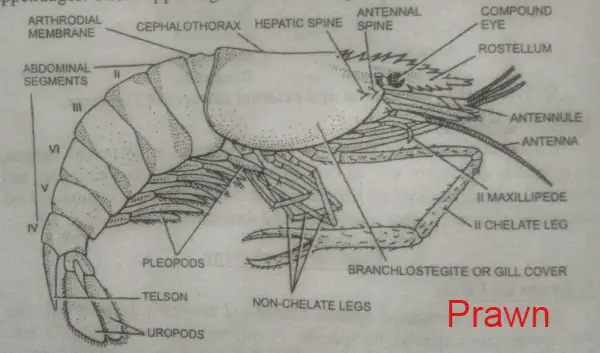
Main characteristics of Phylum Arthropoda –
- Arthropoda, artho means joints and poda means legs. Meaning animals whose feet are jointed are placed in the arthropods. Or such animals are called Arthropods.
- This creature is the largest phylum in the kingdom. The insect has been included in this phylum.
- About 65% of the entire castes found on this earth are arthropods.
- They get the physical organization of the organ system level.
- Their body is divided into sections.
- They get biradial symmetry, they are triploblastic and the true coelom is found in them.
- Their skeleton is made of chitin and their appendages are jointed.
- Their body is divided into the head, thoracic, and abdomen.
- The respiratory activity is through the surface of the body, clome, respiratory tubes, and book lungs.
- An open circulation system is found in them.
- They consist of antennae, simple eye, compound eye, chemical reception, and touching sensory organs.
- Malpigian ducts are found for excretory in them.
- They are mostly unisexual and mostly eggs.
- Financially important insects – Apis (bee), bombyx (silk insect), Lasipher (lac insect).
- Disease carrier insect – female anopheles mosquito (malaria), culex mosquito (filaria), Aedes mosquito (chikungunya, dengue).
Phylum Mollusca
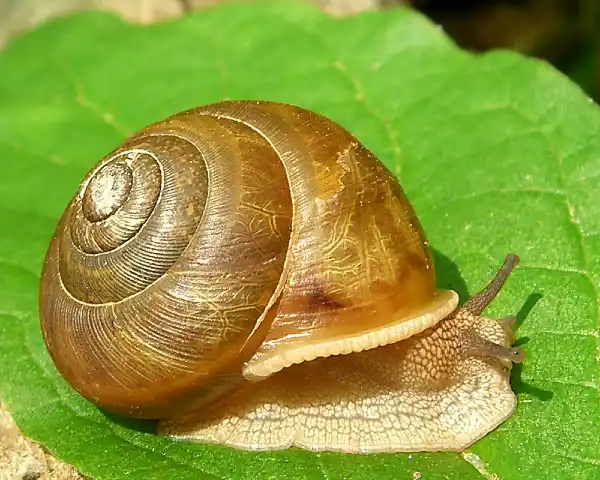
Main characteristics of phylum Mollusca –
- This is the second-largest phylum.
- They are both terrestrial and aquatic.
- They have organ system level organization.
- It is a bilateral symmetry, triploblastic, and coelomic animal.
- These are animals with soft bodies, but their body is covered with rigid calcium armor.
- Their body is made of a head, muscular foot, and a visceral mass.
- A soft spongy layer of the skin is formed on top of the hump. This is the creation of a furor.
- A fabric cavity is found between the hump and mantle, in which clome are found similar to feathers which help both respiratory and emissions.
- Sensory tactile is found on their head. Those who receive sensations.
- They have an organ called a radula to grind the food in their mouth.
- They have different males and females separate and these animals are oviparous.
- Examples – Pila (snail), Pincatada (free oyster), Sepia (Cuttlefish), Lolio (squid), Aplysia (sea rabbit), octopus (Betal fish) dentalium, etc.
Phylum Echinodermata
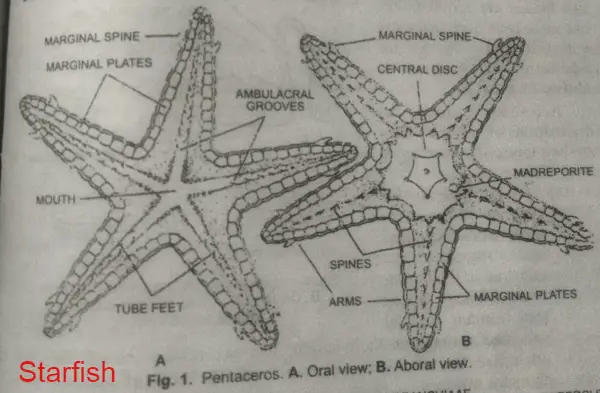
Main characteristics of Phylum Echinodermata –
- These are called Echinodermata because the creatures of this phylum have a skeleton containing calcium and their skin is found on the spicules.
- All these creatures are sea.
- In this, organ system level organization is also found.
- These are triploblastic and coelomic.
- Their larvae have bilateral symmetry while in the adult state, radial symmetry is found.
- Digestion is complete in them and the mouth is found on the lower surface and on the anus on the bottom.
- It contains a water convection system that helps in movement, food, respiration, and emissions.
- The excretory system is not found in their body.
- It is monogamous.
- The fertilization is out in them.
- Examples – Esterius (Starfish), Antidone (Marine Lily), Echinus (Sea -urchin), Ophiura (brittle star), Cucumaria (Sea Crab), etc.
Phylum Hemichordata

The main characteristic of phylum hemichordate –
- They were first placed in the Chordata phylum but later they have been included in Non-Chordates.
- These animals are similar to worms which are mainly found in seawater.
- It contains organ system-level organization.
- These are triploblastic, bilateral symmetry, and coelomic animals.
- Their body is cylindrical and is divided into proboscis, collar, and trunk.
- An underdeveloped structure is found in their collar region called the stomochord which is the same structure as the notochord. Due to this, they were first placed in the Chordata phylum but later it was found out that it is not the notochord, due to which they were kept in a separate phylum, which was named Hemichordata as this Chordata shows half the incomplete characters of the phylum. Hemi means – semi and Chordata means chordates.
- The circulatory system is of open type in them.
- They are in respiratory gills.
- Proboscis glands are found in their probosci’s part which helps in emissions.
- They are monogamous, and fertilization is out.
- In them, development is indirect, that is, the larvae state is found in their life, which is called Toneria larva.
- Examples – Balanoglossus and Sacoglossus, etc.
Phylum Chordata
If you want to read about Phylum Chordata, then click on Read More. Friends, this article was getting very long, so complete information about Chordata is given in another article.
Friends, I hope that you will like the information given about the animal kingdom, if you have liked it, then please share it with your friends so that they can also benefit from it, and if this article If there is a mistake, please comment and tell me.
Thank you
What are the levels of organization of the human body?
The organ system levels the organization of the human body.
